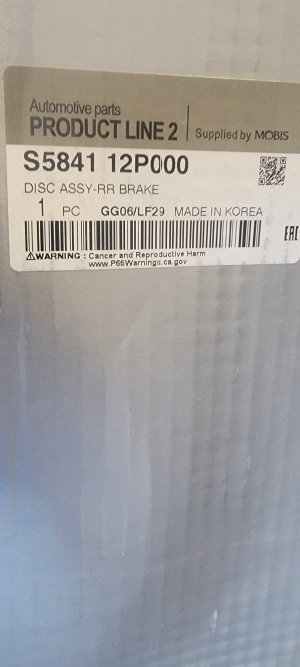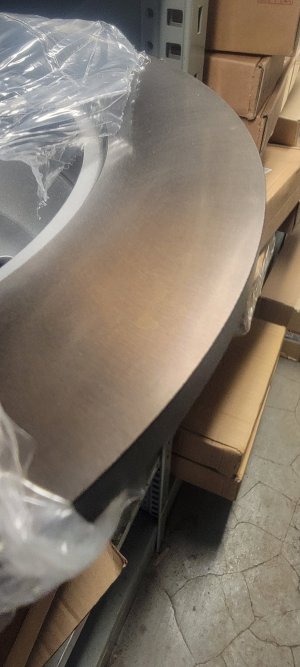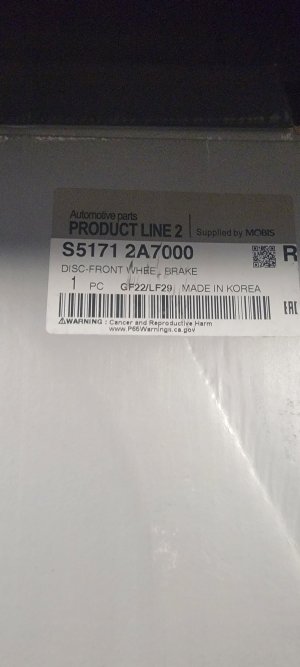-
Scam Alert. Members are reminded to NOT send money to buy anything. Don't buy things remote and have it shipped - go get it yourself, pay in person, and take your equipment with you. Scammers have burned people on this forum. Urgency, secrecy, excuses, selling for friend, newish members, FUD, are RED FLAGS. A video conference call is not adequate assurance. Face to face interactions are required. Please report suspicions to the forum admins. Stay Safe - anyone can get scammed.
-
Several Regions have held meetups already, but others are being planned or are evaluating the interest. The Calgary Area Meetup is set for Saturday July 12th at 10am. The signup thread is here! Arbutus has also explored interest in a Fraser Valley meetup but it seems members either missed his thread or had other plans. Let him know if you are interested in a meetup later in the year by posting here! Slowpoke is trying to pull together an Ottawa area meetup later this summer. No date has been selected yet, so let him know if you are interested here! We are not aware of any other meetups being planned this year. If you are interested in doing something in your area, let everyone know and make it happen! Meetups are a great way to make new machining friends and get hands on help in your area. Don’t be shy, sign up and come, or plan your own meetup!
You are using an out of date browser. It may not display this or other websites correctly.
You should upgrade or use an alternative browser.
You should upgrade or use an alternative browser.
DRO Mounting System
- Thread starter Susquatch
- Start date
I may also make a wrap around tooling rack for the mill with those control arms. They have the right sort of shape. And forged aluminum should be strong enough..
As a mechanic and machinist wannabe, I see stuff in junk car parts all the time.
You might like the one step tramming tool I've been working on using a brake disk.
You might like the one step tramming tool I've been working on using a brake disk.
I definitely have enough of those, and have thought about it before. My thoughts on tramming, after fighting for days to get a perfect tram, are that the rotor would get you very very close , very quickly. After that you'd still want to check the naked table surface, then the vice. Every time you add a 'layer' you add the possibility that a tiny chip or burr could wreck your day. I do like the idea though. I just wouldn't slap a rotor on the table and sweep it and then consider it good.
I definitely have enough of those, and have thought about it before. My thoughts on tramming, after fighting for days to get a perfect tram, are that the rotor would get you very very close , very quickly. After that you'd still want to check the naked table surface, then the vice. Every time you add a 'layer' you add the possibility that a tiny chip or burr could wreck your day. I do like the idea though. I just wouldn't slap a rotor on the table and sweep it and then consider it good.
I actually hope I can. But the key word is HOPE.....
It will get a good work out at the proving ground before I trust it.......
With a 10-12" dia rotor, thats going to give you very good resolution, and easy to sweep.
My suggestion, go to your local Kia dealer, buy a front rotor for a 2016 Kia Sorento. Get the second line part. Its the same as the first line, just cheaper, silver box, not brown. The have a fine ground surface, so no indicator bounce due to surface roughness. I have mic'd them, and they are within what my best mic can measure for thickness variation. So less than a tenth. They are very heavy compared to anything from the aftermarket. There is a significant difference in weight. Expect to pay about 60-70 bones plus tax. Cheap as borscht in the machine shop world.
My suggestion, go to your local Kia dealer, buy a front rotor for a 2016 Kia Sorento. Get the second line part. Its the same as the first line, just cheaper, silver box, not brown. The have a fine ground surface, so no indicator bounce due to surface roughness. I have mic'd them, and they are within what my best mic can measure for thickness variation. So less than a tenth. They are very heavy compared to anything from the aftermarket. There is a significant difference in weight. Expect to pay about 60-70 bones plus tax. Cheap as borscht in the machine shop world.
With a 10-12" dia rotor, thats going to give you very good resolution, and easy to sweep.
My suggestion, go to your local Kia dealer, buy a front rotor for a 2016 Kia Sorento. Get the second line part. Its the same as the first line, just cheaper, silver box, not brown. The have a fine ground surface, so no indicator bounce due to surface roughness. I have mic'd them, and they are within what my best mic can measure for thickness variation. So less than a tenth. They are very heavy compared to anything from the aftermarket. There is a significant difference in weight. Expect to pay about 60-70 bones plus tax. Cheap as borscht in the machine shop world.
Wish I had your advice before I started. I already knew they would be great for uniformity. That's an inherent requirement for a disk brake that doesn't pulsate on braking. What I didn't know was the best one to order. I used a takeoff Rotor for testing which was pretty darn good but had some internal corrosion in the cooling vanes. So I simply bought a new one for the same car. I wish I had bought a solid Rotor instead of a vaned one. But it measured perfect and sweeps just under two tenths. Perfect other than the excessive thickness and weight. I have the sweeping plate but have not started work on that yet.
a few tenths over that diameter is nothing. I'm always amazed at the surface finish, and the overall quality of the factory rotors, especially compared to the aftermarkets, even the premium aftermarket rotors.
Yup. And yet brake noise/wear/feel is still one of the biggest issues for consumers...... Go figure!
Factory second line rotors are better than aftermarket premium, and are often cheaper. few people realize this.
Yup, and they are also a piece of precision that almost nobody knows about.
My suggestion, go to your local Kia dealer, buy a front rotor for a 2016 Kia Sorento. Get the second line part. Its the same as the first line, just cheaper, silver box, not brown. The have a fine ground surface, so no indicator bounce due to surface roughness. I have mic'd them, and they are within what my best mic can measure for thickness variation. So less than a tenth.
Hey Darren, are those vented rotors? If so, does Kia sell a rear non-vented Rotor of similar quality?
Yes, but the fronts are lower overall profile, and way heavierHey Darren, are those vented rotors? If so, does Kia sell a rear non-vented Rotor of similar quality?
Attachments
Last edited:
Yes, but the fronts are lower overall profile, and way heavier
Thanks. I'll have to keep looking. I know there is one out there someplace because I found one. I just don't know what it came off of!
I'm sure any rotor with consistent thickness would be fine, i'm just saying that this would be my first choice for the task at hand.
I agree. But I'd like to find an inexpensive one that is not vented with a decent flange on it to clear vise jaws, and a nice finely ground surface that doesn't require polishing. That way it can be used without removing the vise and doesn't bounce the indicator needle.
I'm not clear on how you are thinking.. The vise plays no part in tramming the head to the table, where you'd use a rotor, Once trammed, you'd tram the vice, but not with the rotor. More of squaring the vice to the X axis, usually, and than as a final check, indicating the vice jaws/bed to make sure its 'flat'. If you know your vise, you'd tram the head to the table with the rotor, then square up the vise and be done. With a typical Bridgeport type, you have enough x travel to lay the rotor beside the already squared up vise and tram the head without disturbing the vise at all.
Of course you are right.
But that isn't really what I want to do. It's a bit of a fun research project. I want to explore the weaknesses of the system, develop an improved tramming system, and have some fun.
Ive never been the kind of fellow who just does things the same way as everyone else does them. I like to do things differently to expand my own understanding and once in a while to develop some new knowledge.
My current thinking (which could all change) is to put a 12" Rotor on gauge blocks above the vise without removing it. Then I want to repeat the process again with the Rotor at both ends to evaluate how much the table flexes at the ends with the weight of the table and vise hanging out at either end.
Then I want to do it all again without the vise.
In the meantime I am also working on a 3 gauge tramming tool that will tram both axis simultaneously complete with an optical illusions to mess with the users mind.
If you were here I could explain it better. Especially with a few beers in hand. But for now all I'm after is a 12" low weight rotor with a good smooth surface grind.
But that isn't really what I want to do. It's a bit of a fun research project. I want to explore the weaknesses of the system, develop an improved tramming system, and have some fun.
Ive never been the kind of fellow who just does things the same way as everyone else does them. I like to do things differently to expand my own understanding and once in a while to develop some new knowledge.
My current thinking (which could all change) is to put a 12" Rotor on gauge blocks above the vise without removing it. Then I want to repeat the process again with the Rotor at both ends to evaluate how much the table flexes at the ends with the weight of the table and vise hanging out at either end.
Then I want to do it all again without the vise.
In the meantime I am also working on a 3 gauge tramming tool that will tram both axis simultaneously complete with an optical illusions to mess with the users mind.
If you were here I could explain it better. Especially with a few beers in hand. But for now all I'm after is a 12" low weight rotor with a good smooth surface grind.
They are powdercoated and will not rust until you douse them with calcium chloride for 50k kms or so...
You must be talking about the Kia rotors.



